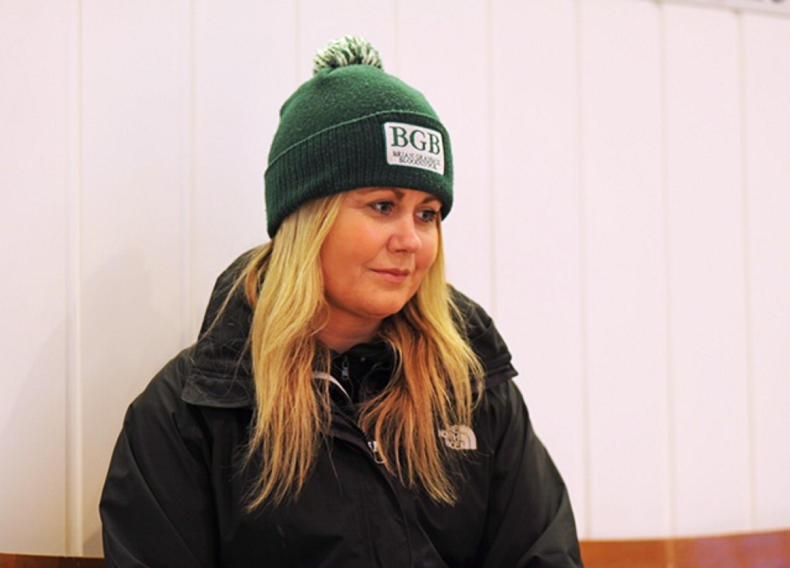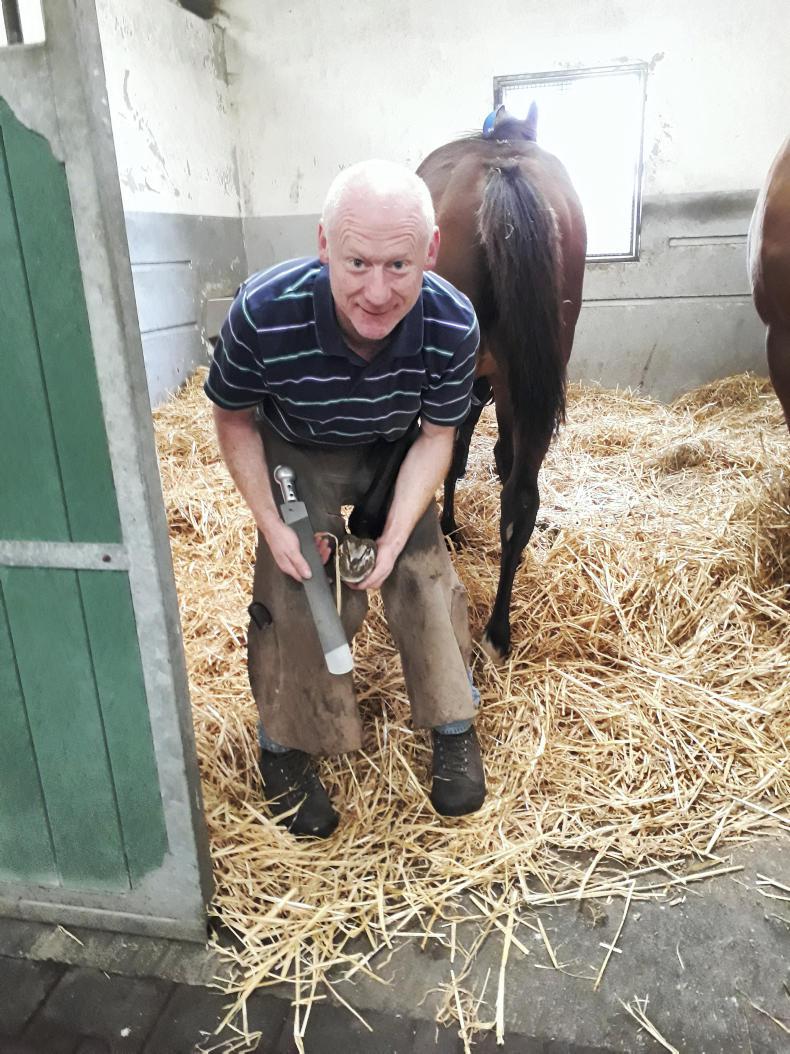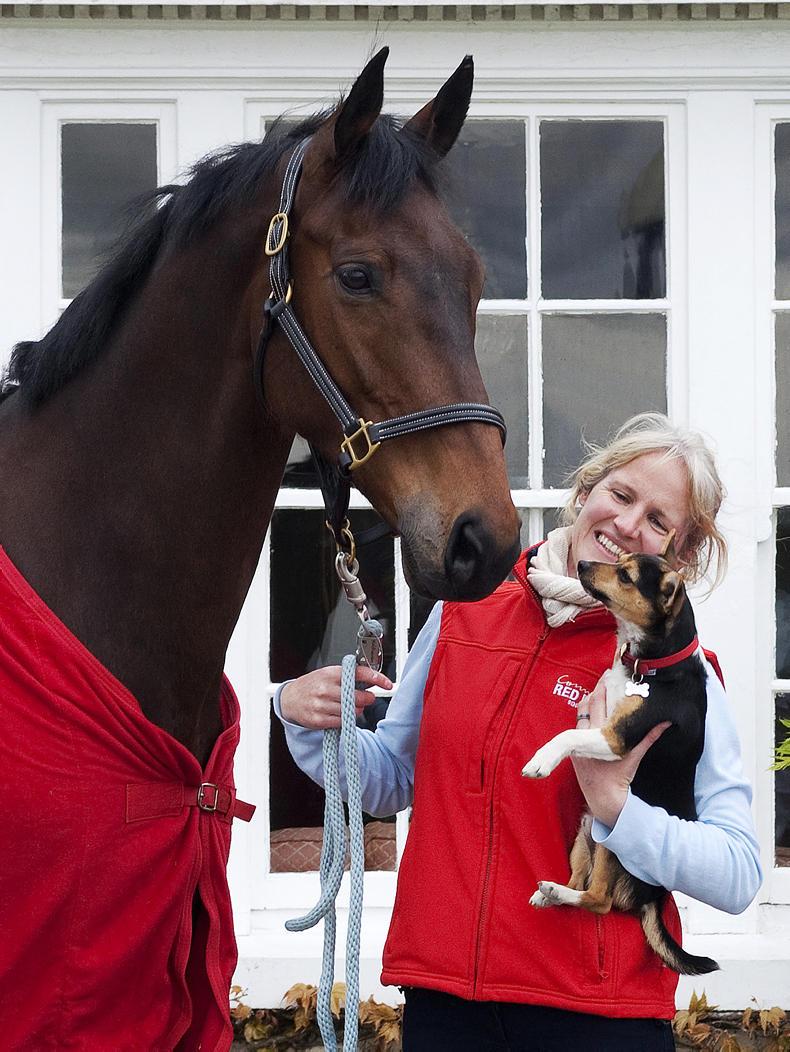AS the foal sale season approaches, the Irish Thoroughbred Breeders Association (ITBA) held a seminar with leading industry experts to inform breeders on how best to prepare and sell their foals.
Each speaker was an expert in their own field and brought a unique level of expertise to the table. One thing agreed and emphasised by all four speakers was that preparation starts at conception and that carefully thought-out plan for getting foals to the sales must begin early.
The seminar took place as part of the ITBA’s educational programme, which receives funding from the Department of Agriculture under its Equine Technical Support & Breeding Scheme Project
“Think like a pinhooker”
This was the advice of leading bloodstock agent and consignor Cathy Grassick. Grassick is involved in foal sales as both a consignor and a buyer which gives her a unique perspective. She emphasised the need for consignors to think like pinhookers: “You need to think about supply and demand, what are the pinhookers looking for? Look at the market trends from the year before.”
Foal buyers are the harshest buyers, according to Grassick, and are in a position where they are be very selective about what foals they buy. She went on to explain how the foal market can be very difficult to judge and staying ahead or keeping up with trends can be very challenging for breeders. In order to counter this, Grassick advised breeders to start planning early.

Cathy Grassick
This begins with choosing what stallion you are going to cover your mare with. She recommended breeders begin by looking at their mare’s pedigree. From there, they should look at the stallion and what type of foal they usually get.
If you are considering using a first season sire make sure that they are good walkers. This is especially important if the mare isn’t the best walker. She also advised breeders to look at what is selling well and what is performing well on the track.
Once a breeder has decided on selling as a foal they must put a plan in place to make this happen – this plan should begin as soon as the foal is conceived.
However, Grassick did remind breeders that selling as a yearling is a good back-up option. This may work well if you have bred a middle-distance horse as they tend to develop and mature later and thus are more likely to sell well as yearlings rather than foals.
Plan ahead
As is the case with almost everything in the equestrian industry, there are many ways to get to Rome and preparing a foal for the sales is no different.
Grassick detailed how she likes to prepare foals but also highlighted that this way may not suit everyone and that “everyone has their own ways of doing things.”
She added: “You never stop learning – that’s one of the most important lessons that my father told me when I started off.”
There are a number of things to consider when making a plan for your foal, and one additional factor that breeders will have to consider is for Goffs February 2020 that weanlings being sold will be required to have at least their first flu vaccination.
Grassick begins her foal preparation by hand-walking in an enclosed paddock, she will gradually increase the amount of walking as they foals get fitter, she said: “Each foal is walked to their own capacity.”
If Grassick feels a foal is not physically ready for the sales she is inclined to withdraw them. She added: “Make sure the foal is physically ready for the sale before you bring them, if they are not sold you will face more problems in the future.”
The foals will need to have their hooves conditioned ahead of the sale. Grassick recommended that all foals should be seen and have their hooves dressed by a farrier when they are between six and eight weeks old.
However, they should not have their hooves trimmed too close to the sale, ideally it should be done two weeks beforehand.
Grassick warned breeders not to be afraid of being catalogued on a lesser pedigree day. She explained how this can sometimes work to the breeder’s advantage as they become a bigger fish in a smaller pond.
In terms of getting the pedigree listed in the catalogue, Grassick gave the breeders some very useful advice. She explained how you are allowed to edit a pedigree within the Weatherbys’ rules, and this gives breeders a chance to get the most relevant information in and make sure everything on the foal’s page is correct. She also explained the importance of phasing things carefully and including any noteworthy prize money.
However, Grassick did add: “It’s an advertisement of fact not fiction.” Nothing from the last two years can be removed from the page and if Weatherbys are not happy with your edit they will ask you to change it.
Farrier care
 Master Farrier Liam O’Donovan was another of the main speakers at the seminar, he explained how getting foals seen by a farrier from an early age can make a huge difference. He said: “Our job as farriers and veterinary surgeons etc. is to help get you the best price possible.”
Master Farrier Liam O’Donovan was another of the main speakers at the seminar, he explained how getting foals seen by a farrier from an early age can make a huge difference. He said: “Our job as farriers and veterinary surgeons etc. is to help get you the best price possible.”
In general, O’Donovan recommended that foals should be seen by a farrier when they are around six weeks old. However, he did say that if the foal has particularly poor conformation they should be seen by a farrier earlier than this, but that it is important to remember foals take some time to form themselves and in a lot cases they can correct themselves early on.
He used a slideshow display to show a range of different corrective farrier methods on foals and detailed each problem and solution as he went. He highlighted the need for breeders to be conscious of what surfaces they are walking foals on during sales preparation.
He cautioned to watch the rate of wear on the hoof in comparison to the rate of growth. O’Donovan recommended walking foals on grass or all weather surfaces as much as possible to help encourage regrowth.
During the sale O’Donovan recommended using practices such as cold hosing and icing to prevent foals from becoming sore. He said that some foals may get sore in their feet while showing outside the stables but when they get onto the better surface in the sales ring they will dramatically improve.
Nutrition
Grassick touched on the importance of good nutrition and highlighted the need to look after both the mare and foal during pregnancy and after birth. She detailed how feeding the mare correctly will directly impact on the size of the foal and, therefore, impact on how physically ready the foal is for the sales and how well they are likely to sell.
Every foal should be monitored and feed according to their own individual condition, according to Grassick. She went on to say that foals becoming overweight is just as dangerous as foals becoming underweight.
Grassick avoids buying overweight foals as much as possible. She explained that it can be very difficult to get the weight off them and that it can lead to a number of problems as they get older.
Nia O’Malley is part of the expert team of equine nutritionists working with Connolly’s Red Mills and was another of the four speakers at the seminar. O’Malley continued on from where Grassick left off in terms of discussing the importance good feeding and nutrition and feeding for both mares and foals.

Nia O'Malley, Equine Nutritionist with Connolly's Red Mills
Poor nutrition can limit the potential for growth, especially within the first six months or a year. O’Malley explained how foal growth is not linear and that the greatest demands come in the fifth month of pregnancy, with 60% of growth taking place in the last trimester. Mineralisation of the liver also takes place in the final trimester which requires protein and minerals. She listed different products which provide the necessary vitamins and minerals.
When it comes to lactation O’Malley said breeders should always think of the foal. A mare at the height of lactation requires the same as a racehorse in full work. Finding the right balance of feeding can be difficult, especially when calorie and mineral requirements differ. In this situation feeding a balancer can be very useful.
O’Malley emphasised the importance of treating every mare and foal as individuals and tailoring feeding programmes to suit each individual.
Foals become less reliant on the mare from when they are about three months old, and from this stage onwards O’Malley said that breeders need to start maintaining growth.
In order to do this, you have to look at other factors such as what pasture your mare and foal are on and the quality of any roughage that they are getting.
Introducing new feeds into the digestive system can cause difficulties. To avoid this causing issues, O’Malley suggested that breeders always feed a small amount of hard feed, be it cubes or mixes, to foals. This helps to build up the enzymes needed to break down the feed and allow the foal to get the highest nutritional value out of the feed.
Weaning can be a very stressful times and both Grassick and O’Malley focused on the importance of keeping things as routine and as relaxed as possible during weaning to try to reduce the impact of stress on the foal.
Grassick weans her foals in the field in a large group, this works because she is working with a larger number of foals but she explained that this system would not suit everyone. s
Feeding as weaning can be tricky and according to O’Malley this is a time when foals can go off their feed. In order to try to prevent this, O’Malley suggested feeding a combination of cubes and mix. In general, she recommends feeding cubes over mix because cubes are more digestible but mixes are more palatable.
O’Malley also recommended including chaff with feed to help improve digestion and slow down eating.
At the sales
Always make sure you have someone who knows all the necessary details about the foal at the sales and make sure they are always at the stable and ready to show the foal if somebody is interested in them.
Every foal should have practiced showing before the sales, so try your best to replicate the sales environment at home and get the foals used to as much as possible. Grassick goes as far as playing a recording of sales noises in the yard to get the foals used to it.
One thing Grassick made very clear is that she would not allow a foal to be repeatedly scoped at the sales. Instead, she get a high quality video scope done before the sale that prospective buyers and veterinary surgeons can view if they want to.
Not every foal will be required to have X-rays taken, however, she said that if she is selling a foal that is likely be to very valuable then you should have X-rays ready. If a prospective buyer asks to get X-rays taken you should decide and make it very clear who is paying for and who owns the X-rays. If the buyer pays for the X-rays they are within their rights to deny the breeder access to the X-rays.
Feeding at the sales
Slightly like with weaning, O’Malley emphasised the importance of keeping the sales situation as stress-free as possible for foals. She recommended feeding foals little and often throughout the day at the sales, always feed chaff at the sales, and always keep hay and water in front of them. If the weather is very cold, add a drop of hot water into their water so it is not too cold for them to drink.
O’Malley suggested adding some apple cider vinegar into the foals’ water at home in the run up to the sales, this will give the foals time to get used to the taste and then when you get to the sales they will taste the apple cider vinegar rather than noticing any change in the taste of the water.
O’Malley also suggested that breeders shouldn’t be afraid to use calming supplements to help keep foals relaxed.

Following the morning discussion, the seminar moved to the Irish National Stud to find out how they prepare and assess their foals ahead of the sales \ ITBA